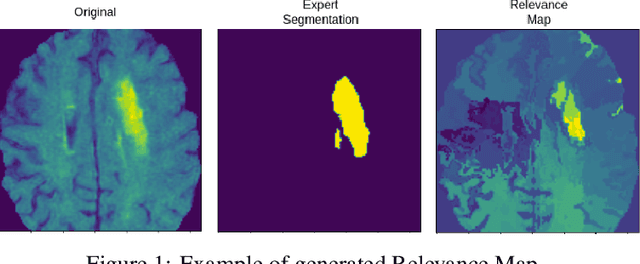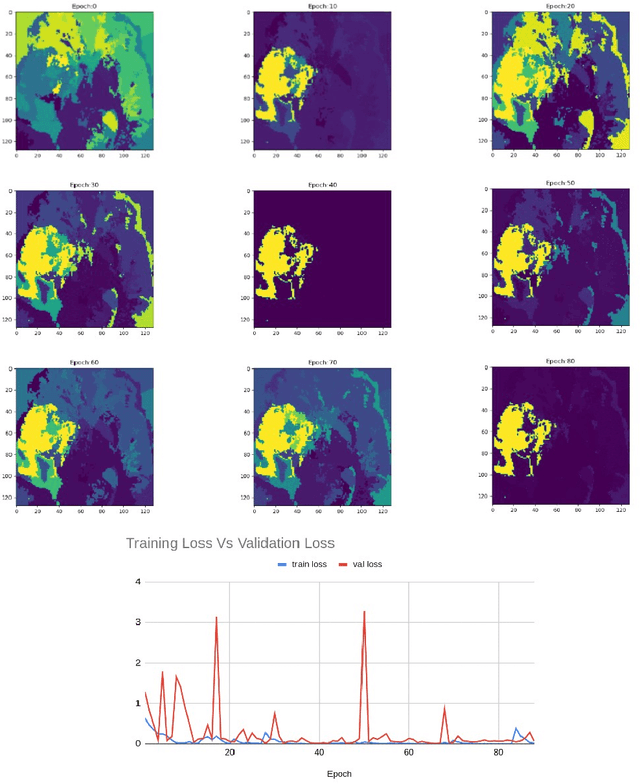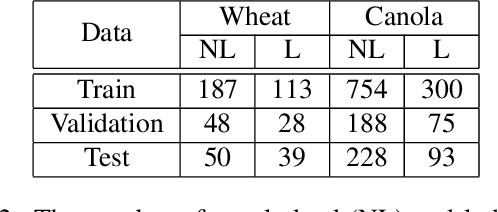Sajith Rajapaksa
Using Large Text-to-Image Models with Structured Prompts for Skin Disease Identification: A Case Study
Jan 17, 2023



Abstract:This paper investigates the potential usage of large text-to-image (LTI) models for the automated diagnosis of a few skin conditions with rarity or a serious lack of annotated datasets. As the input to the LTI model, we provide the targeted instantiation of a generic but succinct prompt structure designed upon careful observations of the conditional narratives from the standard medical textbooks. In this regard, we pave the path to utilizing accessible textbook descriptions for automated diagnosis of conditions with data scarcity through the lens of LTI models. Experiments show the efficacy of the proposed framework, including much better localization of the infected regions. Moreover, it has the immense possibility for generalization across the medical sub-domains, not only to mitigate the data scarcity issue but also to debias automated diagnostics from the all-pervasive racial biases.
Optimized Global Perturbation Attacks For Brain Tumour ROI Extraction From Binary Classification Models
Nov 09, 2022


Abstract:Deep learning techniques have greatly benefited computer-aided diagnostic systems. However, unlike other fields, in medical imaging, acquiring large fine-grained annotated datasets such as 3D tumour segmentation is challenging due to the high cost of manual annotation and privacy regulations. This has given interest to weakly-supervise methods to utilize the weakly labelled data for tumour segmentation. In this work, we propose a weakly supervised approach to obtain regions of interest using binary class labels. Furthermore, we propose a novel objective function to train the generator model based on a pretrained binary classification model. Finally, we apply our method to the brain tumour segmentation problem in MRI.
Localized Perturbations For Weakly-Supervised Segmentation of Glioma Brain Tumours
Nov 29, 2021



Abstract:Deep convolutional neural networks (CNNs) have become an essential tool in the medical imaging-based computer-aided diagnostic pipeline. However, training accurate and reliable CNNs requires large fine-grain annotated datasets. To alleviate this, weakly-supervised methods can be used to obtain local information from global labels. This work proposes the use of localized perturbations as a weakly-supervised solution to extract segmentation masks of brain tumours from a pretrained 3D classification model. Furthermore, we propose a novel optimal perturbation method that exploits 3D superpixels to find the most relevant area for a given classification using a U-net architecture. Our method achieved a Dice similarity coefficient (DSC) of 0.44 when compared with expert annotations. When compared against Grad-CAM, our method outperformed both in visualization and localization ability of the tumour region, with Grad-CAM only achieving 0.11 average DSC.
Crop Lodging Prediction from UAV-Acquired Images of Wheat and Canola using a DCNN Augmented with Handcrafted Texture Features
Jun 18, 2019



Abstract:Lodging, the permanent bending over of food crops, leads to poor plant growth and development. Consequently, lodging results in reduced crop quality, lowers crop yield, and makes harvesting difficult. Plant breeders routinely evaluate several thousand breeding lines, and therefore, automatic lodging detection and prediction is of great value aid in selection. In this paper, we propose a deep convolutional neural network (DCNN) architecture for lodging classification using five spectral channel orthomosaic images from canola and wheat breeding trials. Also, using transfer learning, we trained 10 lodging detection models using well-established deep convolutional neural network architectures. Our proposed model outperforms the state-of-the-art lodging detection methods in the literature that use only handcrafted features. In comparison to 10 DCNN lodging detection models, our proposed model achieves comparable results while having a substantially lower number of parameters. This makes the proposed model suitable for applications such as real-time classification using inexpensive hardware for high-throughput phenotyping pipelines. The GitHub repository at https://github.com/FarhadMaleki/LodgedNet contains code and models.
 Add to Chrome
Add to Chrome Add to Firefox
Add to Firefox Add to Edge
Add to Edge